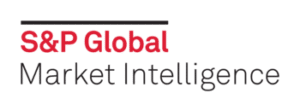The right data platform allows IROs to streamline processes while cutting through the noise
As data continues to flood the market, IROs are finding it both challenging and time-consuming to gauge market perceptions of their companies.
Increasingly, IROs are looking to their data platform providers to help them collect all the available, granular insight from brokers in one place, where it can be sorted, analyzed and better understood.
But how can that data be passed through into the earnings process overall and be used to improve the impact of a company’s latest figures on various stakeholder audiences?
Much of that starts with the insights gathered. Some providers will offer IR teams detailed, line-item consensus and broker estimates that go beyond the standard EPS or revenue figures. Armed with this, IR teams can prepare narratives that will resonate even more deeply with their investor audiences, either through identifying trends that analysts have picked up on, or by being able to drill in behind the numbers to reveal a deeper truth.
The best IR teams understand how their message has been disseminated into the investment community post-earnings
What’s more, sometimes those analyst insights can change daily. If a new line item gets published or revised – and you are not aware of the deeper implications – it can lead to a mismatch between your earnings narrative and what stakeholders perceive. Platforms that are able to aggregate sell-side insights in real-time are increasingly a priority for IR teams who need to ensure they have the latest intelligence available to them – and to feed those narratives into their earnings script.
Keeping track of similar companies in your peer group, sector or even wider geography is also key to making sure that your messaging resonates with a range of stakeholders. Having the same level of granular data from analysts covering their stock can help inform your narrative, whether providing differentiation or helping your audience understand the deeper trends at play. Having the ability to see consensus on your competitors – and, crucially, to see how those views are revised post-earnings – is a vital weapon in an IRO’s toolkit.
Another crucial aspect is to use tools that can integrate data directly into your existing IR processes, whether that’s through an Excel spreadsheet, feeding into a custom dashboard or connecting to more advanced workflows.
Not only does this streamline the forecasting process and enable quick integration of consensus data into company models, but it also allows teams to compile accurate, updated forecasts for their earnings calls, which reduces manual data management and allows more time for strategic planning.
The best IR teams are also those that can understand how well their message has been disseminated into the investment community post-earnings. Being able to see how the market has responded to your latest figures in real-time means that you can instantly understand how well that message has come across and can quickly highlight any discrepancies in time for the next earnings date and improve your efficacy over time.
Being able to do this all at first glance, with no time-consuming data collection or standardization required, means that IR teams will have longer to concentrate on the other parts of their earnings process – briefing management, for example, or putting together a comprehensive investor Q&A. Not only that but, further down the line, it frees up IROs to concentrate on more strategically significant activities.
To explore the insights brokers generate on your company or peers, visit the S&P Global Corporate Earnings Resource Center. Discover downloadable pre-earnings tear sheets, expertly curated comp tables, KPI guides, an earnings season checklist and a wealth of other resources to keep you ahead and prepared. Transform your earnings season workflows, explore new data integrations and reimagine your IR analysis with an ecosystem of intelligence available on S&P Capital IQ Pro, Visible Alpha and Capital Access.
Christina Cartagena is a marketing manager at S&P Global, joining the company through its acquisition of Visible Alpha







